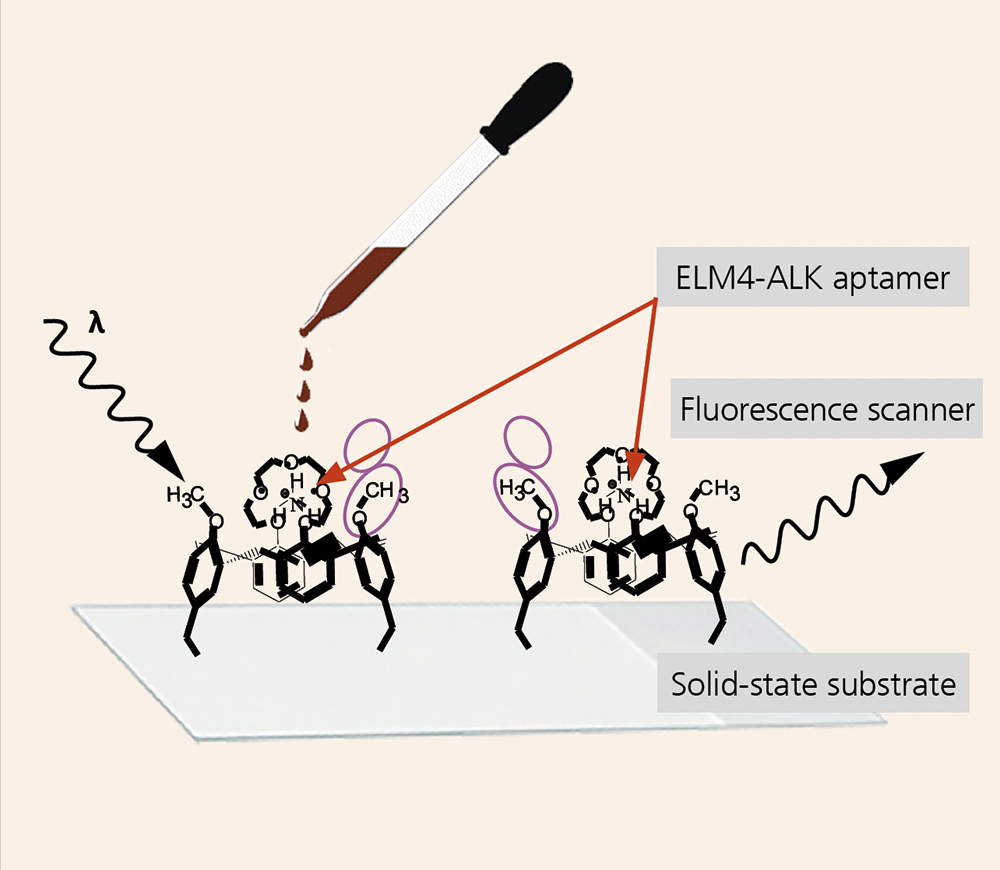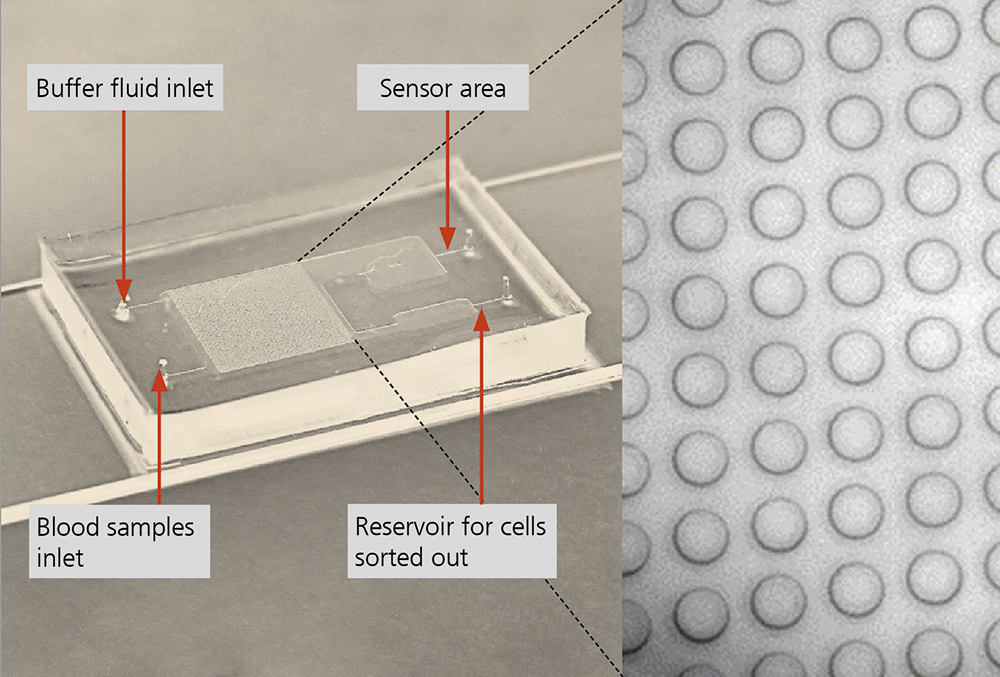
Microfluidics for aptamer-based biosensors
Current research

In an ageing society, the improvement of quality of life is one of the most important goals of global research efforts. The field of biosensors is one of the essential building blocks for preserving and improving the health status as it enables quick, precise and mobile analysis of biomarkers, pathogens or pollutants. As part of the Eureka joint project BIOSTAR17, IKTS is developing a novel diagnostic biosensor for the detection of the EML4-ALK fusion protein, a marker for non-small-cell lung cancer in the blood. The detection of this protein is based on its interaction with special highly sensitive receptors (aptamers), artificially manufactured antibodies made of self-folding single-stranded DNA chains or peptides. For this purpose, blood and aptamers are brought into contact on a microfluidic chip by firmly immobilizing the aptamers on a glass substrate and transporting the blood in channels to the aptamer. In order to develop a reliable packaging concept for the biosensor, the polydimethylsiloxane (PDMS)-based microfluidics and the relevant system technology were established at Fraunhofer IKTS. Lithographic technologies (laser, UV and soft lithography) were used for constructing microfluidic channels and assembling the PDMS package with the functionalized solid-state substrate. The compatibility of these technological steps with the sensitive aptamers was subsequently tested. Early analyses of fluorescent-microscopic images indicate that no disturbance of aptamer immobilization is observed. Using deterministic lateral displacement (DLD), the target molecules were separated from other blood components that can negatively influence the sensor measurements. Different sensor designs and sensor chips were developed and tested for this passive cell sorting method. Initial trials with test fluids confirm a dependency of the sorting function on the geometry of the microfluidic channels, as well as on particle size, flow rate and viscosity. The current work of the project consortium focuses on optimizing the sensor design and developing further the aptamers, as well as on sensor tests with patients’ blood in cooperation with Asan Hospital in Seoul, South Korea. The developed biosensor concept will prospectively be transferred into a single-use diagnostic device for rapid detection of non-small-cell lung cancer.
Services offered
- Development of application-oriented sensor packaging designs including biocompatible sensors
- Development of electrochemical, ceramic-based sensors
- Assay development, biochemical functionalization, sensor measurements
- Sensor testing and evaluation under medium influence
- Development and fabrication of microfluidic structures
Download
Supported by




